Ria Formosa Natural Park, Portugal, is located in the eastern Algarve. It’s a breathtaking and ecologically diverse coastal haven that spans approximately 60 kilometers along the coastline.
Designated as a natural park in 1987, Ria Formosa Nature Reserve is celebrated for its unique blend of ecosystems, comprising barrier islands, sand dunes, salt marshes, lagoons, and tidal flats.
This mosaic of habitats not only contributes to the park’s aesthetic charm but also fosters an extraordinary variety of flora and fauna, making it one of the most cherished natural reserves in the country.
What makes Ria Formosa, Algarve, particularly special is its role as a critical stopover point for migratory birds traveling between Europe and Africa.
Disclosure: This post may contain affiliate links. That means that if you make a purchase through one of those links, I will get a small commission at no extra cost to you.
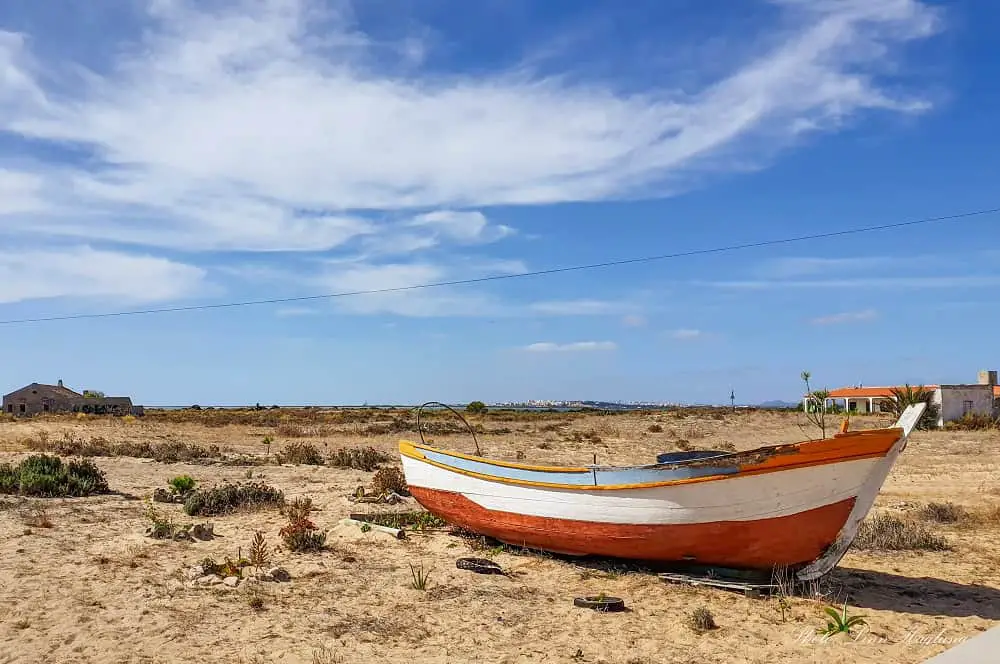
MORE FROM THE EASTERN ALGARVE
- Things to do in Tavira
- Things to do in Olhão
- Things to do in Faro
- Best places to stay in Faro
- Boat tours in Faro
- Is Faro worth visiting?
- Best day trips from Faro
- Where to stay in Algarve for couples
- Is Tavira Portugal worth visiting?
- Best day trips from Tavira
Table of Contents
Ria Formosa Nature Reserve’s unique ecosystem
Ria Formosa Natural Park is home to a remarkable array of plant species adapted to the harsh coastal environment.
Salt marshes are dotted with samphire and sea lavender, while seagrasses sway beneath the water’s surface.
The presence of these unique ecosystems not only contributes to the park’s ecological significance but also provides a colorful and vibrant backdrop to the coastal scenery.
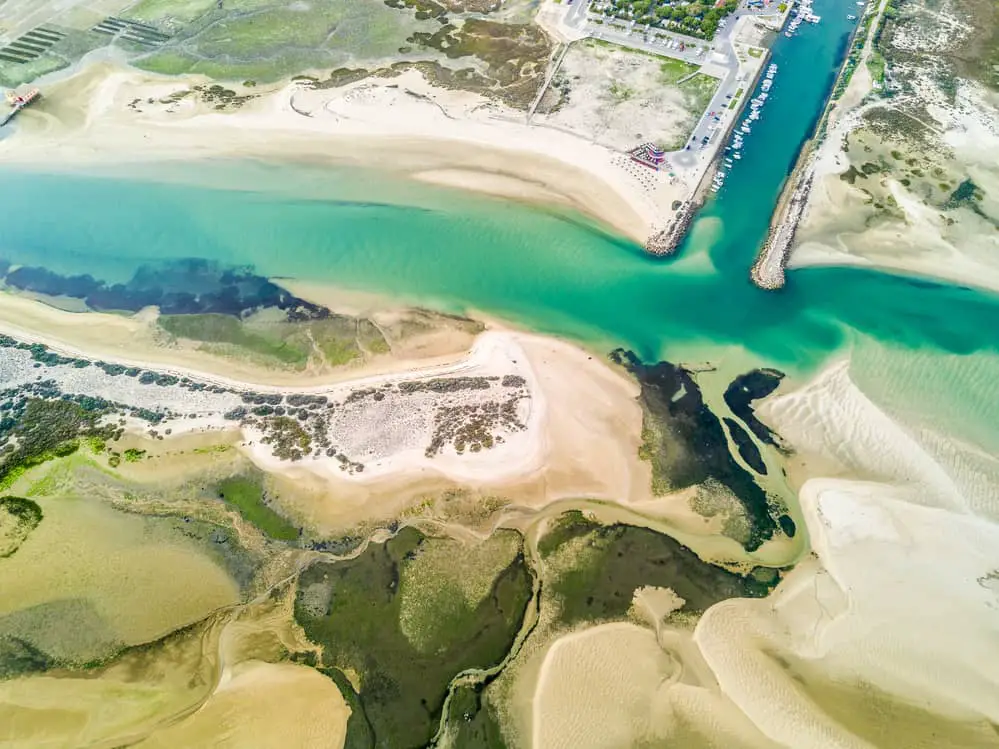
Birdwatching in Ria Formosa Natural Park
Ria Formosa Natural Park serves as a vital resting and feeding ground, attracting thousands of birds annually, including waders, flamingos, spoonbills, and numerous other species.
Birdwatchers from around the world flock to Ria Formosa lagoon, armed with binoculars and cameras, eager to witness the avian spectacle that unfolds during the migration seasons.
The diverse birdlife thrives in the park’s rich ecosystems, and birdwatching has become one of the most popular activities for visitors seeking to connect with nature.
I highly recommend joining this bird-watching tour which takes you through the maze of canals in the wetlands to explore the many birds.
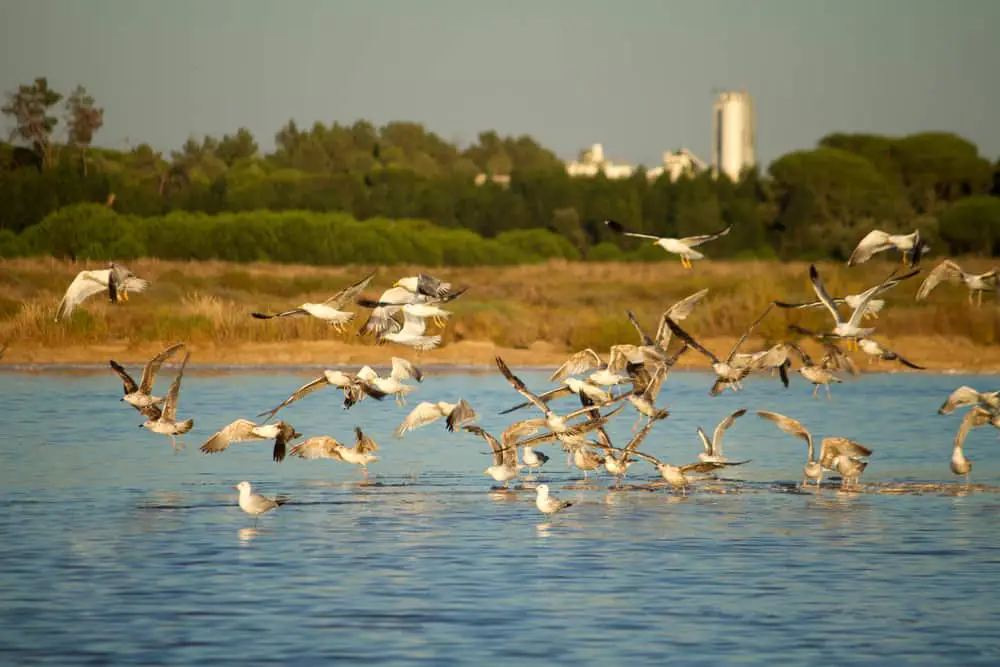
Ria Formosa Natural Park’s Barrier Islands
There are 5 barrier islands that shelter Ria Formosa from the open sea. However, you’ll often see 6 mentioned – because Farol Island is not its own island, but part of Culatra Island – but I’ll get back to that later.
All of these islands offer pristine beaches with golden sands and crystal-clear waters and some are home to old fishing villages.
You can enjoy sunbathing, swimming, and exploring the untouched natural beauty of these islands. There are plenty of Ria Formosa boat tours taking you to the barrier islands from both Faro and Olhão.
I’ll break it down to you below, so you can see what to expect from the different barrier islands below.
Ilha Culatra
Ilha da Culatra is one of the most popular barrier islands in the natural park. Accessible only by boat, this idyllic island boasts some of the best Algarve beaches and crystal-clear waters.
Explore the charming fishing village, where traditional maritime life still endures. There are a few nice little restaurants where you can enjoy lunch on the island – or just grab a refreshing drink while you take in the island life.
Walk through the village and take in the diverse ecosystems, unique flora, and fauna, as you cross the wooden boardwalk to the beach. Maybe you even spot a chameleon – though they’re not easy to spot!
Whether strolling along the sandy shores, discovering the cultural heritage of the village, or indulging in the tranquility of untouched landscapes, Culatra Island is a lovely getaway.
The best way to explore the island is to join a boat tour of Culatra and Armona.

Ilha Armona
Ilha da Armona boasts an array of holiday homes and is the busiest of the barrier islands.
The island boasts sandy beaches stretching along the Atlantic where you can rent loungers and parasols. There’s also plenty to do on Armona Island. Rent a kayak or paddleboard to explore the water or go for a stroll along its pristine beaches.
Explore the quaint village with its colorful houses and discover the island’s maritime culture. Nature lovers can marvel at the diverse flora and fauna, while birdwatchers relish in the migratory species.
Ilha da Armona offers a tranquil atmosphere for sunbathing, swimming, and beachcombing. With its untouched beauty and laid-back culture, this island is a perfect retreat for a couple of nights and is among my top picks for where to stay in Algarve for couples.
However, if you just want to go there on a day trip or on an island-hopping adventure, I recommend this boat trip taking you to both Culatra and Armona islands.

Farol Island
Farol Island is actually not its own island, but the western tip of Culatra Island. It’s inhabited by fishermen and people working in tourism.
Accessible by boat, this idyllic island is renowned for its iconic red-and-white-striped lighthouse that graces the landscape.
You can climb to the top for panoramic views of the surrounding seascape. Farol offers golden sandy beaches, ideal for sunbathing and swimming, while the tranquil village invites exploration.
Join this boat tour that takes you to both Culatra Island and Farol Island.
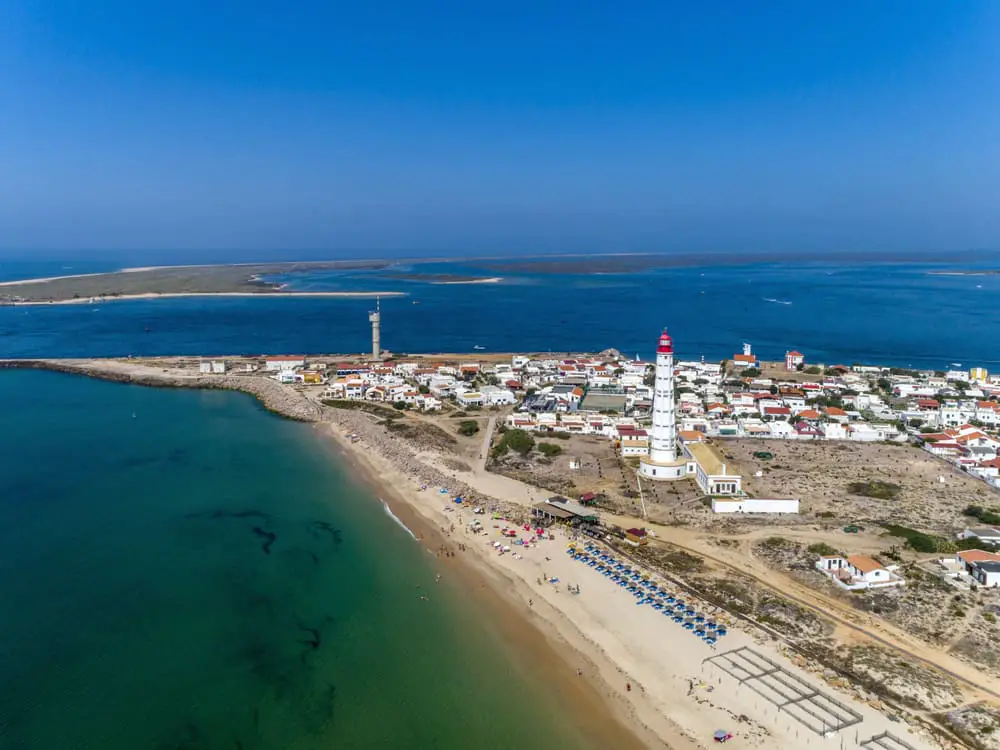
Ilha Deserta (Barreta Island)
Ilha Barreta, mostly known as Ilha Deserta (Desert Island) is truly a secluded escape, devoid of permanent inhabitants.
The vast stretches of golden sand are perfect for beach walks or enjoying remote swimming spots. Take in breathtaking panoramic views of the island and witness the diverse birdlife.
The island is truly a haven for nature lovers, offering tranquility and the opportunity to connect with the most unspoiled beauty of the Algarve.
I recommend going on this boat tour from Faro that takes you to Barreta, Culatra, and Farol Islands.
Ilha de Tavira
Tavira Island is the only one of the barrier islands that’s accessible by foot across a footbridge is located outside Tavira. There’s a tourist train taking you the last 3 kilometers to Barril Beach and the quirky Anchor Cemetery.
This is by far one of the best things to do in Tavira – the 200 large, rusty anchors were once abandoned by fishermen and have now been lined up next to the beach as a reminder of the once-thriving tuna fishing industry. There are a handful of restaurants and cafés there and toilets, but it’s not inhabited.
But you can also reach Tavira Island by ferry or boat directly from Tavira – the ride takes you to the opposite side of the island, to Tavira Beach. There are sunbeds and parasols for rent and a few beach bars to get refreshments on the beach.
Nature enthusiasts can revel in the diverse ecosystems, home to various bird species and lush vegetation.

Ilha de Cabanas
Ilha de Cabanas is located right outside Cabanas de Tavira. It’s known for its scenic boardwalk, offering panoramic views of the Ria Formosa Natural Park.
It offers remote, soft-sanded, golden beaches which are perfect if you want to get away from the crowds. But there are also beach bars and loungers for rent, so if you prefer having other people around, don’t worry. Cabanas Island has it all – yet in a remote setting.
Sustainability
In addition to its biodiversity and scenic beauty, Ria Formosa is also committed to conservation efforts.
The park plays a crucial role in protecting endangered species, such as the chameleon and seahorse, and actively engages in environmental education programs to raise awareness about the significance of preserving this precious ecosystem.
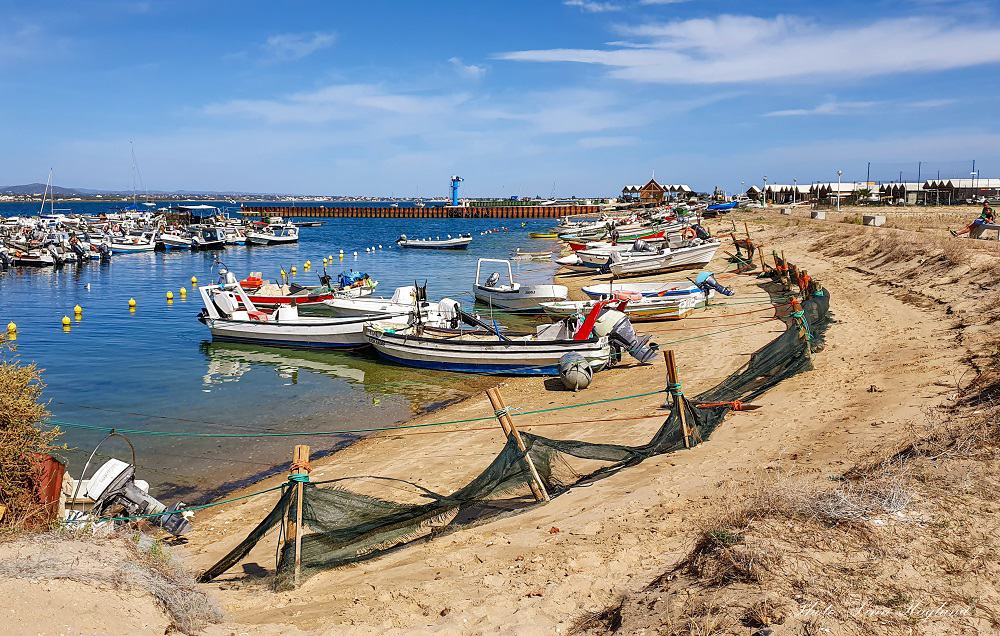
Conclusion: Ria Formosa Natural Park Algarve
In conclusion, Ria Formosa Natural Park, Algarve, is an incredible natural habitat for multiple species and offers an array of wonderful nature experiences.
Whether it’s birdwatching, beachcombing, or exploring traditional fishing villages, Ria Formosa invites you to connect with the richness of nature and appreciate the delicate balance between human activity and environmental preservation.
Happy travels!
